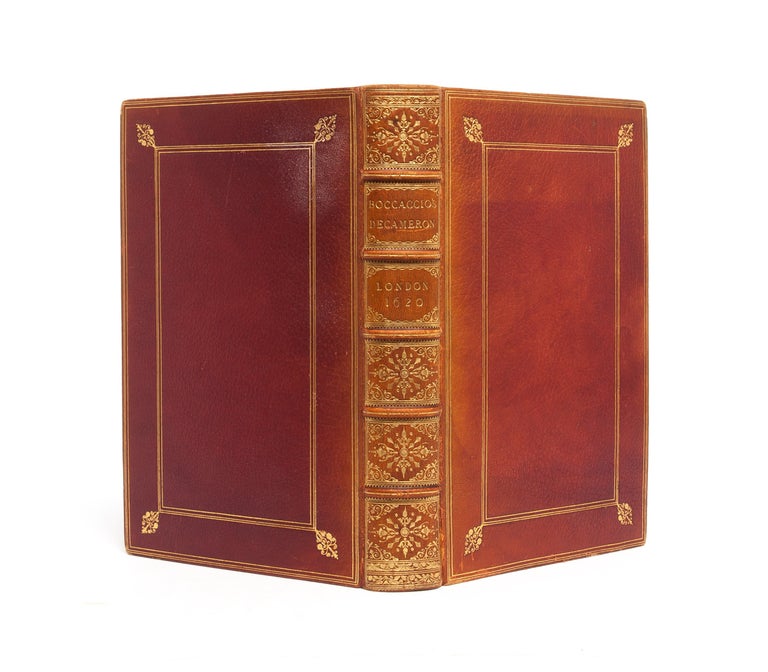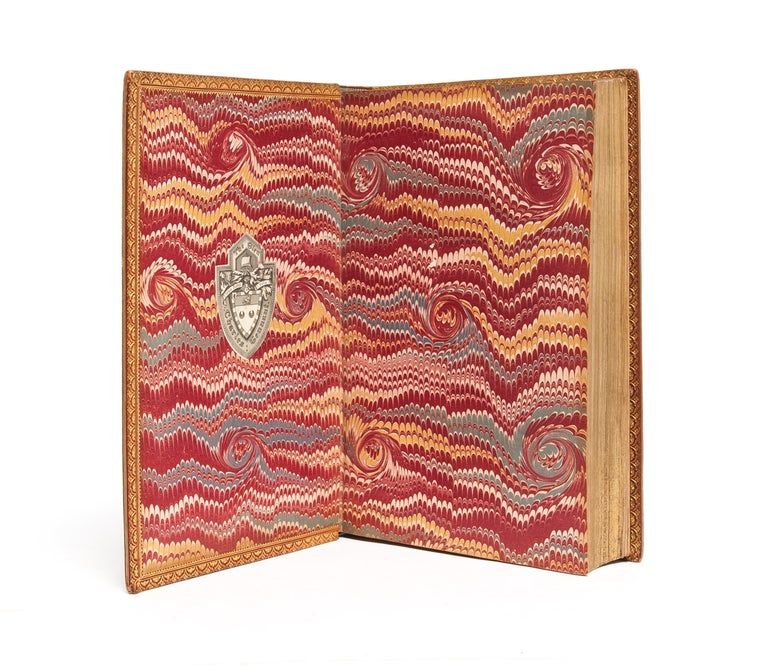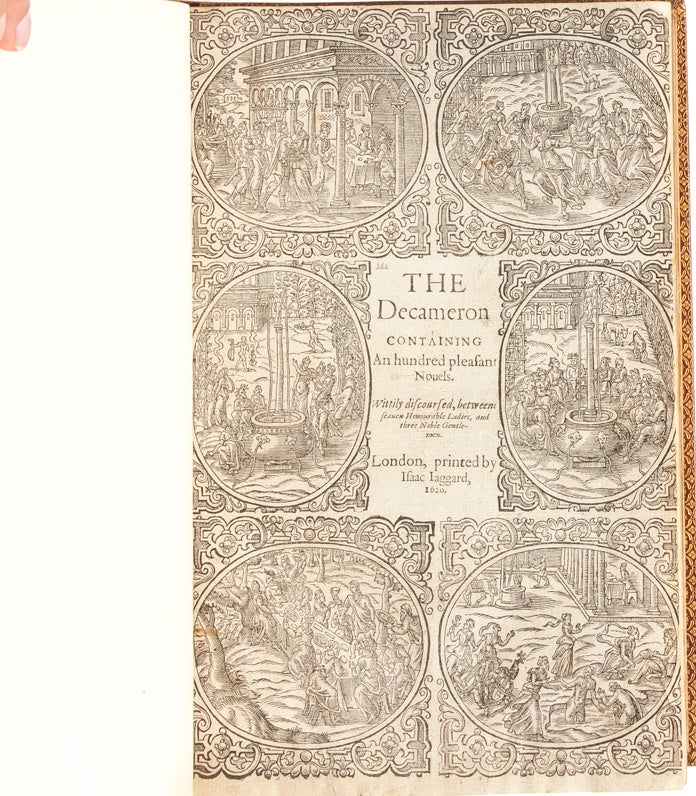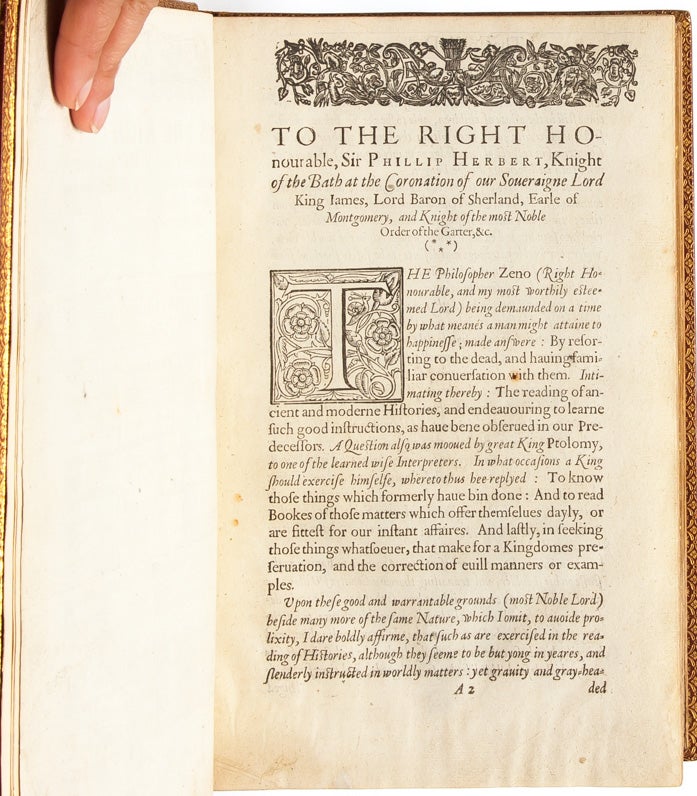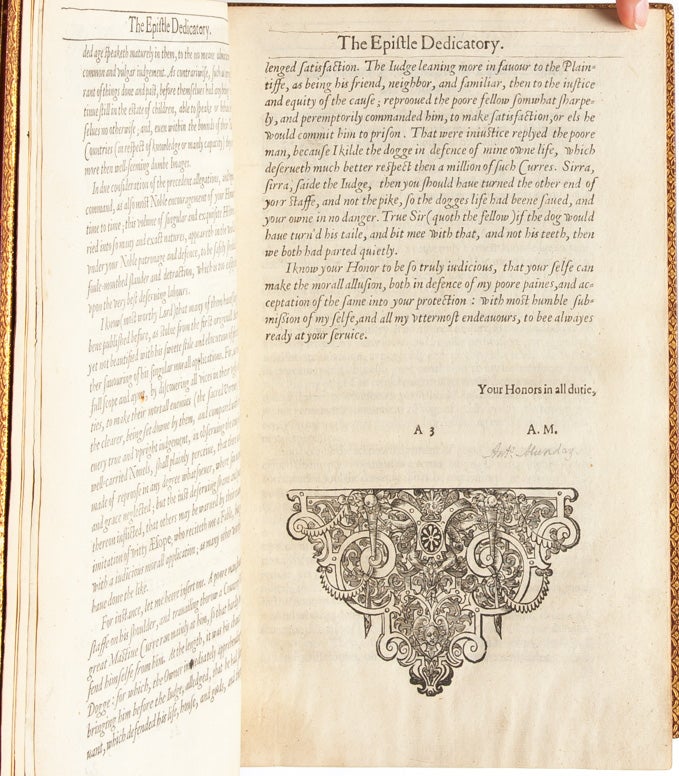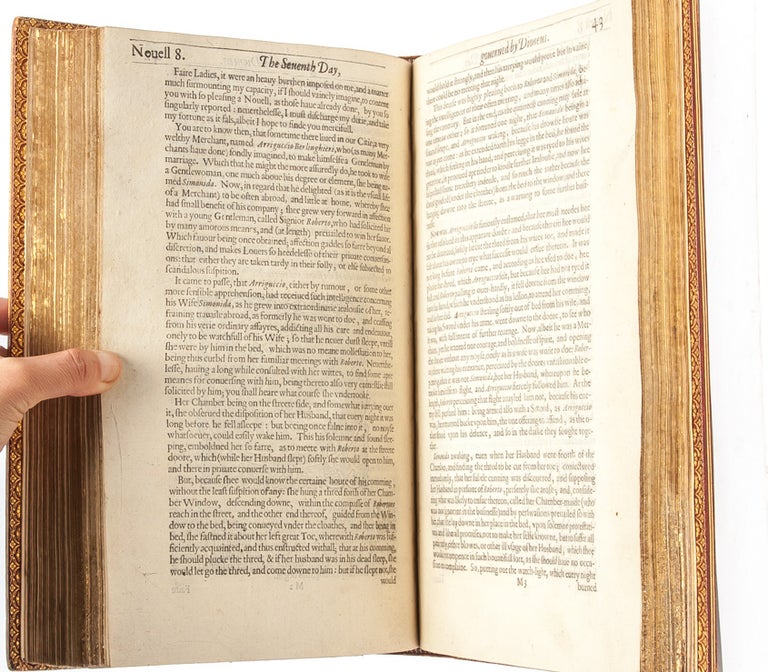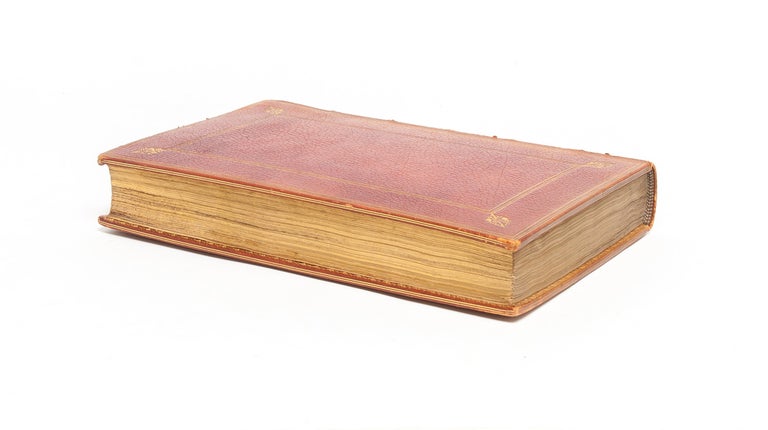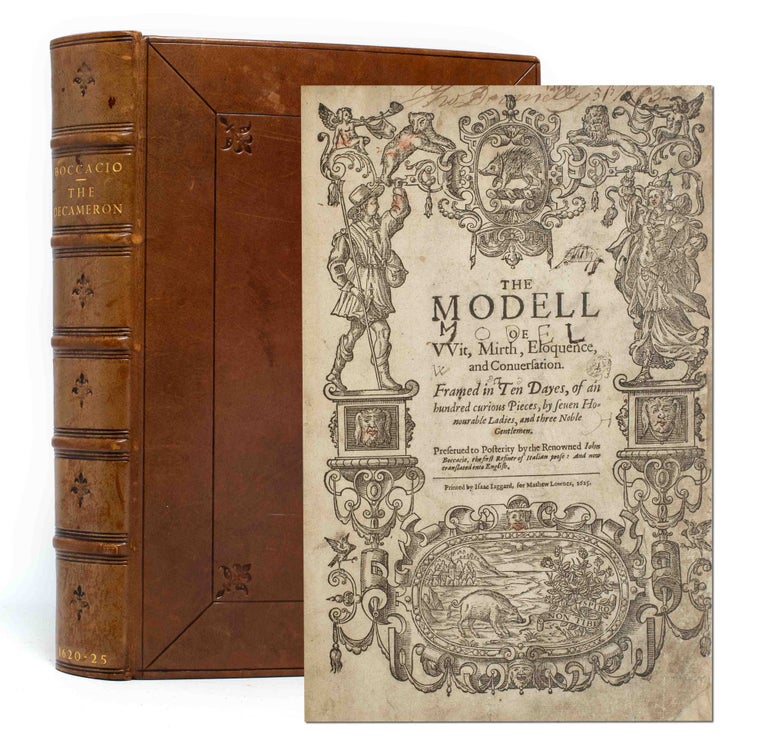The Decameron Containing an hundred pleasant novels. Wittily discoursed, between seaven Honourable Ladies, and three Noble Gentlemen.
London: printed by Isaac Jaggard, 1620, 1620.
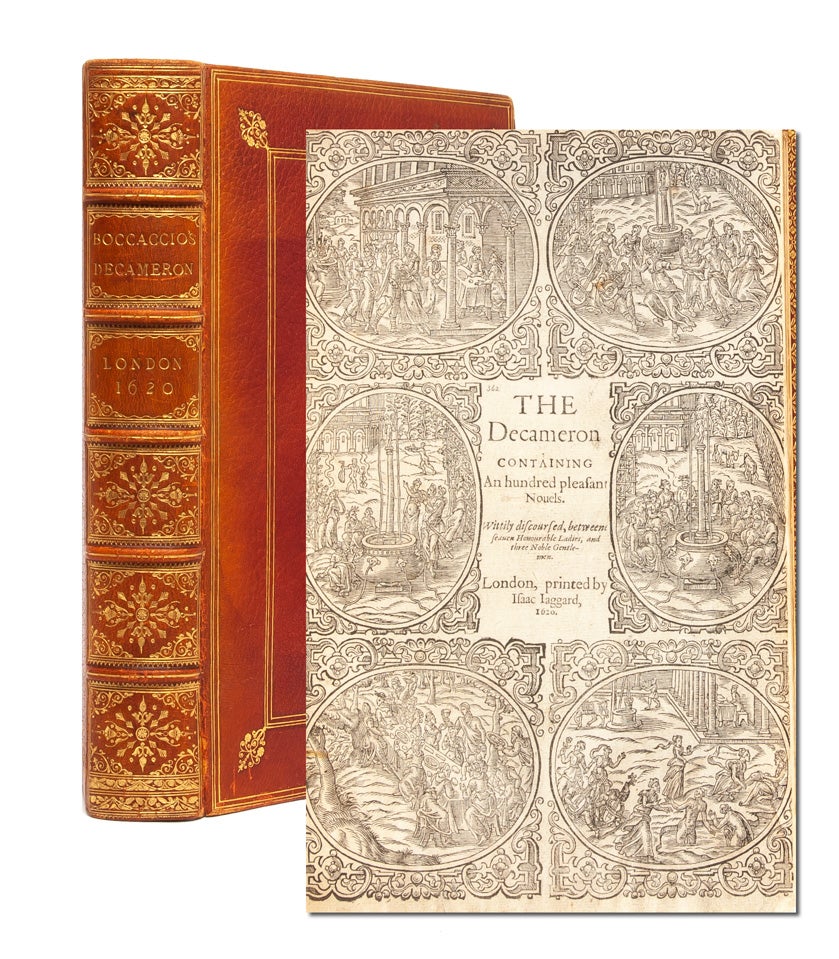

The Decameron Containing an hundred pleasant novels. Wittily discoursed, between seaven Honourable Ladies, and three Noble Gentlemen.
London: printed by Isaac Jaggard, 1620, 1620. First English language edition. One of the classic early works of world literature and a source that Shakespeare drew from. This first translation into English is generally attributed to John Florio. Bound in 19th century full red morocco by Bedford with lovely gilt work in the spine compartments, turn-ins and boards. All edges gilt. Folio (pages 265 x 170 mm), collating complete, with the exception of the two blank leaves, one at the end of part one and the other at the beginning of part two. With all numbering inconsistencies as noted in Pforzheimer, 71. Woodcut title pages trimmed a little close, otherwise ample margins. A few tears or very minor marginal chips to the leaves, professionally repaired at the time of rebinding. Minor wear to the binding at the joints and spine ends, but overall, a clean and very handsome copy, printed by same shop that would print Shakespeare's first folio in 1623. While copies of the second edition of part one (1625), bound with the first edition of part two can usually be located, true first printings of both parts are quite scarce. From the collection of Sir Charles Tennant, with his bookplate on the front paste-down.
Boccaccio’s famed story collection, a classic of renaissance literature – and one of the world’s great books. The stories of the Decameron are told in turn by a group of young Florentines, who have fled the city in order to escape the Plague. (Boccaccio himself had lost relatives during an epidemic of the Black Death in mid 14th century Florence.) The tales of the Decameron were often inspired by – or directly taken from – folk tales both local to Italy and Europe, as well as many that had their origin in the Middle East or even India. The book was quite popular when it was released, especially with northern Italy’s merchant class, and the influence of the Decameron is extremely wide ranging – stretching from Shakespeare and Chaucer, all the way to Edgar Allan Poe. Near Fine (Item #2618)

